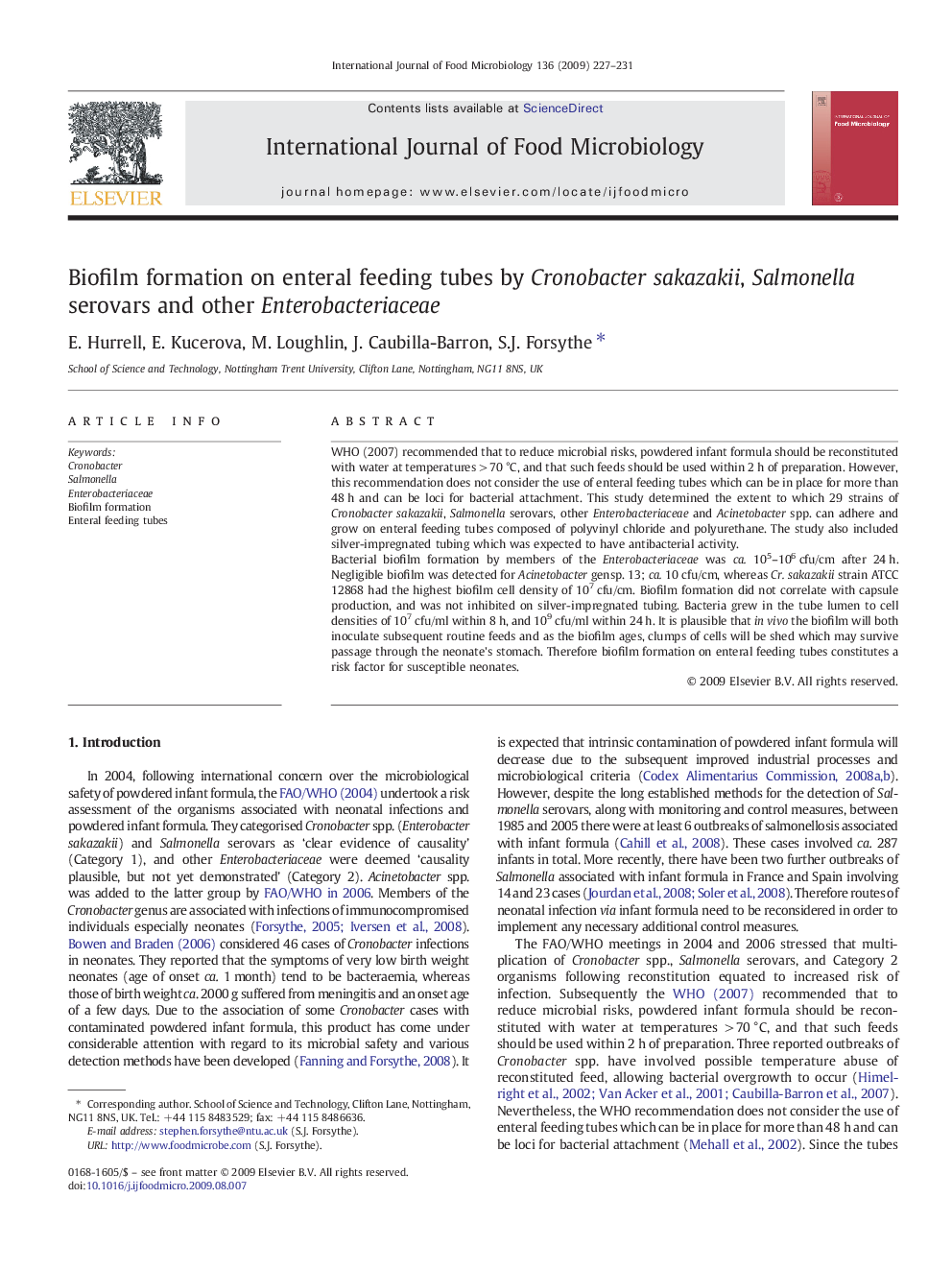| کد مقاله | کد نشریه | سال انتشار | مقاله انگلیسی | نسخه تمام متن |
|---|---|---|---|---|
| 4368473 | 1616696 | 2009 | 5 صفحه PDF | دانلود رایگان |

WHO (2007) recommended that to reduce microbial risks, powdered infant formula should be reconstituted with water at temperatures > 70 °C, and that such feeds should be used within 2 h of preparation. However, this recommendation does not consider the use of enteral feeding tubes which can be in place for more than 48 h and can be loci for bacterial attachment. This study determined the extent to which 29 strains of Cronobacter sakazakii, Salmonella serovars, other Enterobacteriaceae and Acinetobacter spp. can adhere and grow on enteral feeding tubes composed of polyvinyl chloride and polyurethane. The study also included silver-impregnated tubing which was expected to have antibacterial activity.Bacterial biofilm formation by members of the Enterobacteriaceae was ca. 105–106 cfu/cm after 24 h. Negligible biofilm was detected for Acinetobacter gensp. 13; ca. 10 cfu/cm, whereas Cr. sakazakii strain ATCC 12868 had the highest biofilm cell density of 107 cfu/cm. Biofilm formation did not correlate with capsule production, and was not inhibited on silver-impregnated tubing. Bacteria grew in the tube lumen to cell densities of 107 cfu/ml within 8 h, and 109 cfu/ml within 24 h. It is plausible that in vivo the biofilm will both inoculate subsequent routine feeds and as the biofilm ages, clumps of cells will be shed which may survive passage through the neonate's stomach. Therefore biofilm formation on enteral feeding tubes constitutes a risk factor for susceptible neonates.
Journal: International Journal of Food Microbiology - Volume 136, Issue 2, 31 December 2009, Pages 227–231